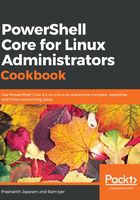
A brief note on .NET Core
Microsoft's announcement of open sourcing .NET in 2014 almost stirred a storm. Many rushed to the stands (so to speak) to read about the unbelievable—how could Microsoft possibly open source the core of their operating system? Some were cynical, while others rejoiced. Then came the announcement—a little louder and clearer—that .NET Core was open source, not the .NET Framework. Many said that .NET Core was a subset of .NET Framework.
.NET was first announced in 2000, as a new platform based on internet standards. Along with it, by the end of the year, Microsoft published the Common Language Infrastructure as a standard, so that anyone who wanted could write their own .NET framework based on those standards. .NET Framework has been the basis of Windows since the noughties.
Windows PowerShell was released to the general market in 2006, as an implementation of .NET Framework, and focused on system administrators (or sysadmins), enabling them to better manage their workloads or daily activities and automate them. PowerShell 1.0 was leaps and bounds ahead of the hitherto rulers of automation Windows: Batch and VBScript.
In June, 2016, Microsoft released a collaboratively refactored, more modern and efficient .NET. The .NET Core was officially born. While .NET Framework continues to rule the Windows arena, .NET Core, which is open source and cross-platform, has picked up great momentum and grows every day. .NET Core seems to be the way forward.
PowerShell Core is based on .NET Core, and therefore is open source, with the same vision as .NET Core: to be cross-platform.